Arc Polo Farm’s charred timber clubhouse underpins its updated Surrey complex
Arc Polo Farm by DROO in Surrey, UK brings together Japanese sensibility and English countryside in a project dedicated to its animal residents and the beloved sport
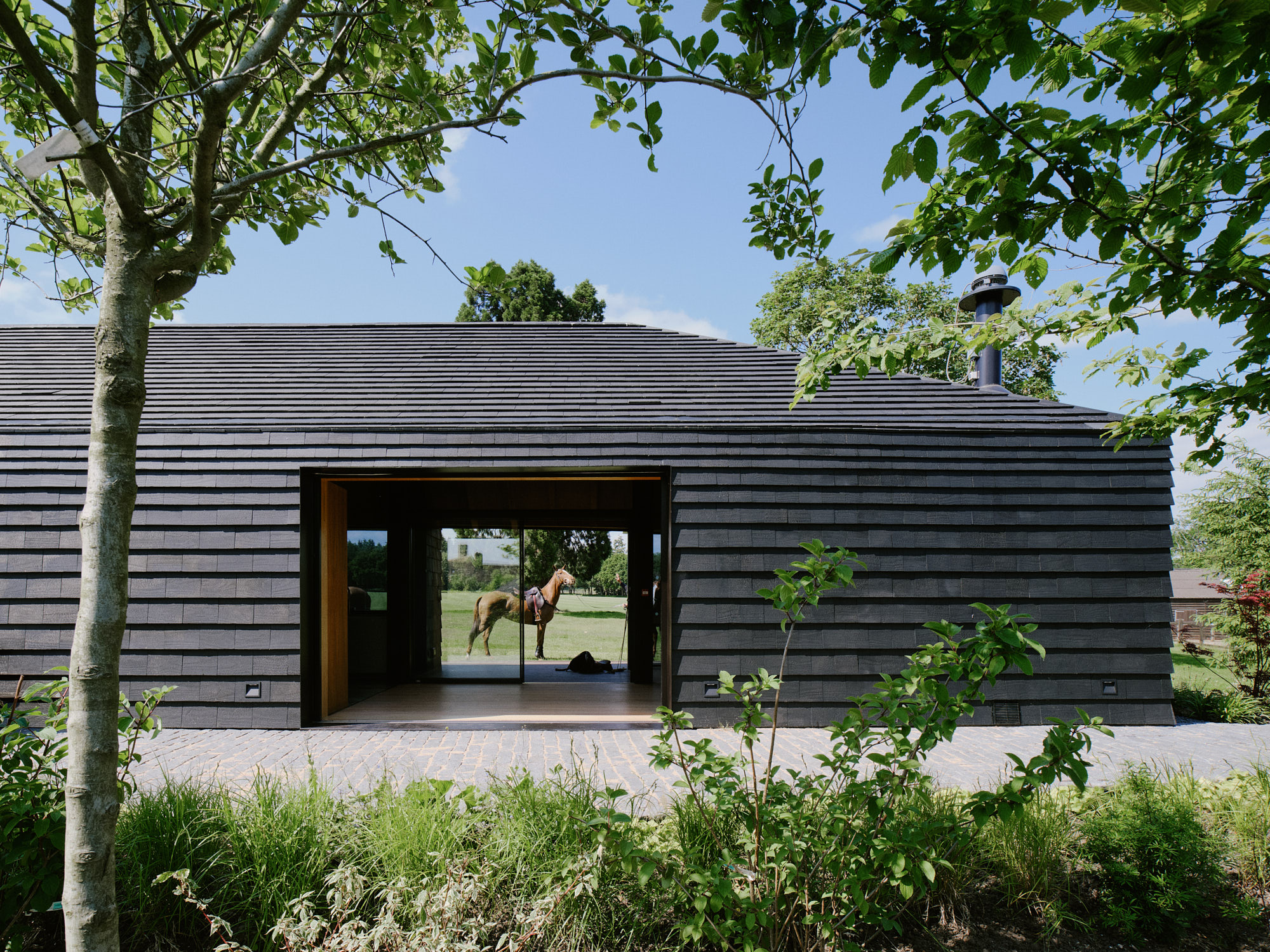
Nestled in the rolling hills of Surrey, UK, Arc Polo Farm brings together old and new, and European and Asian sensibilities in a single, site-specific scheme. Its architects, London- and Paris-based DROO (headed by Amrita Mahindroo and Michel Da Costa Goncalves), were called upon to create a new home for a polo field and stables complex in the Surrey countryside's green expanses thought the addition of a clubhouse for the property.
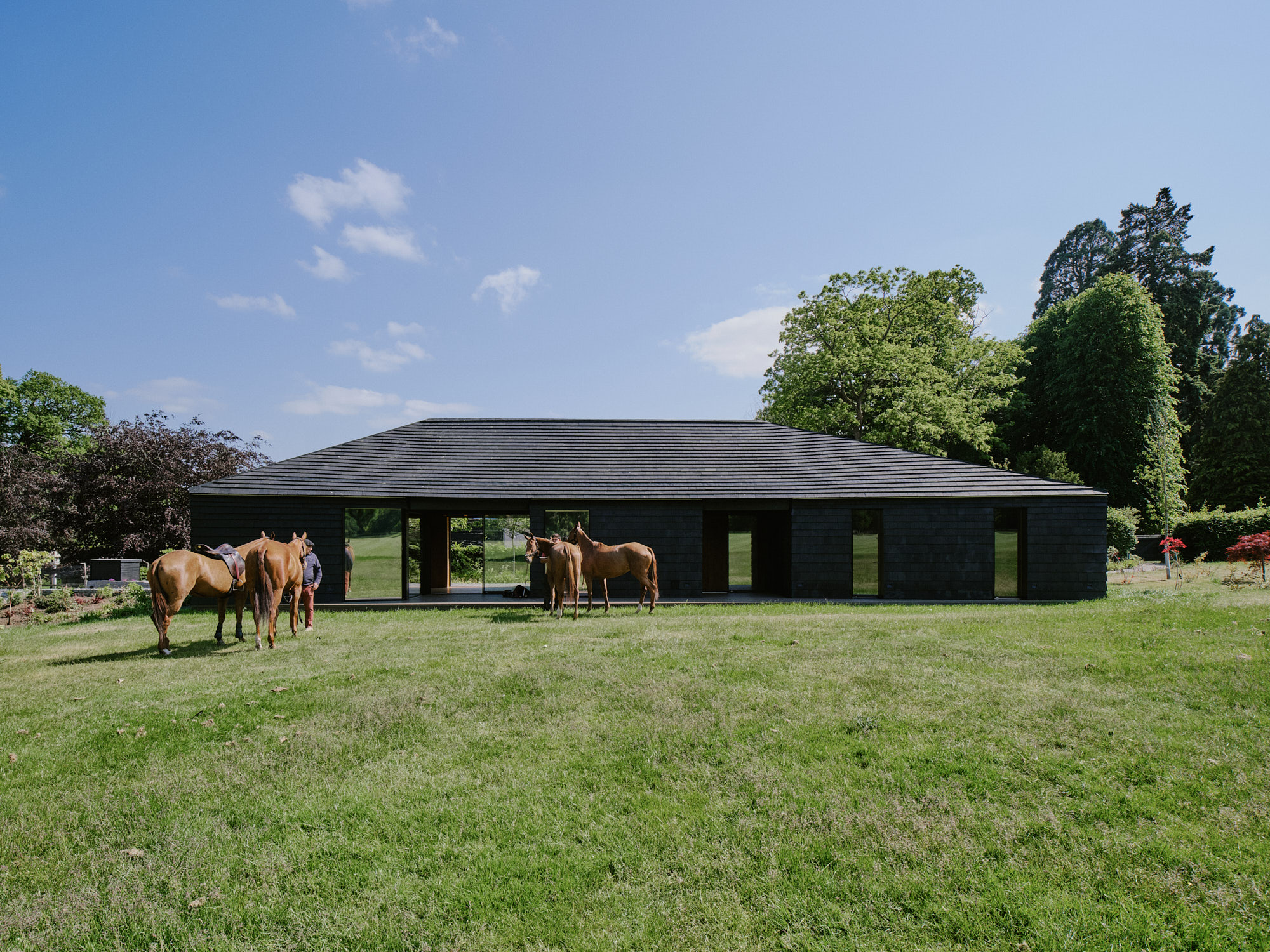
Arc Polo Farm by DROO: a site refreshed
The team worked with the existing masterplan, preserving, as opposed to taking down, the original structures. The complex, set in a horse shoe-shaped arrangement that opens up towards the polo field, contains stables, a main courtyard, the foreground gardens, the clubhouse, and a barbecue deck area.
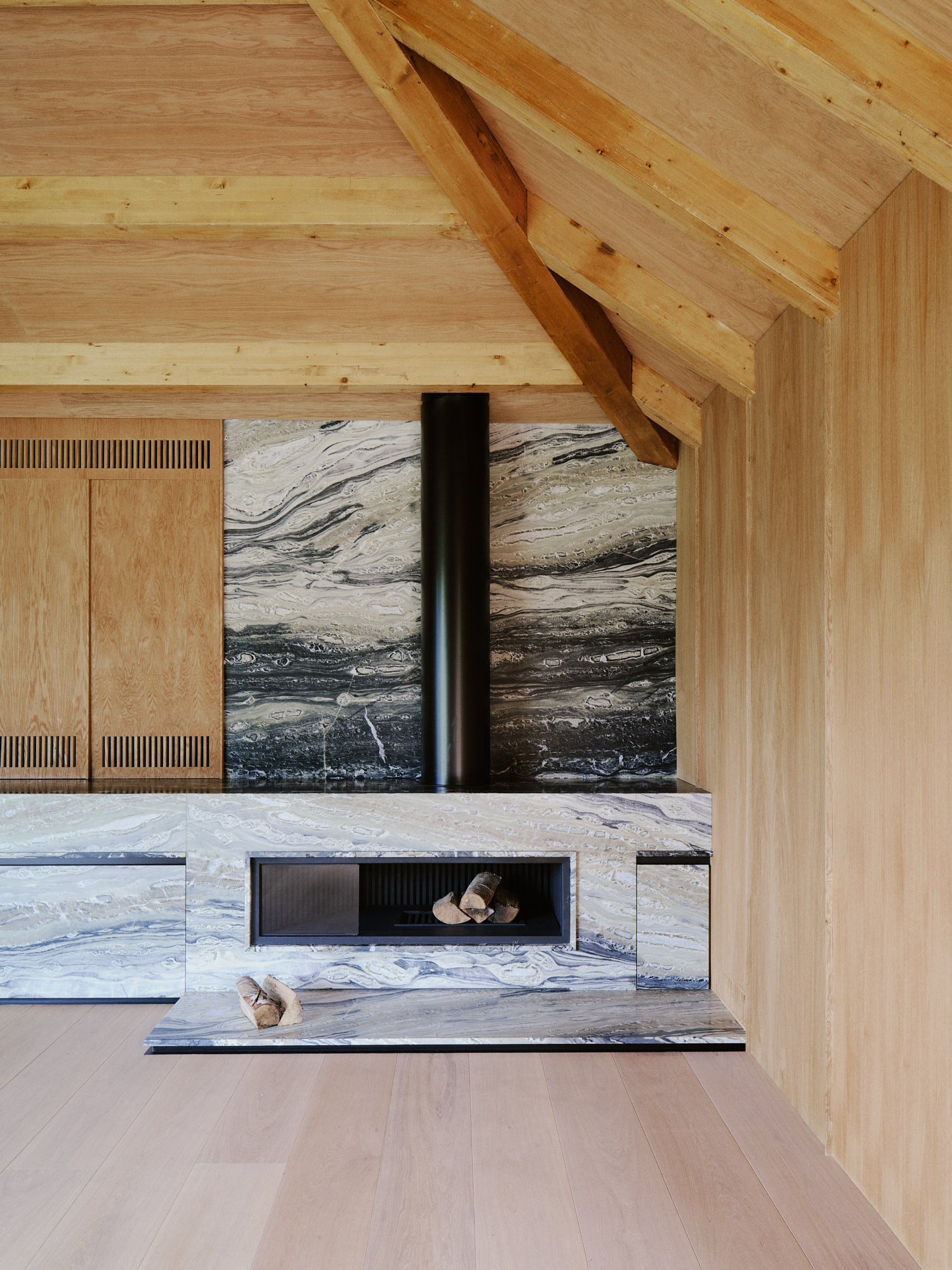
'Each programme [on the site] represents an event on a string of pearls from where the field can be viewed and experienced in a different way,' the architects write.

Dark and linear, the new structure draws the eye, offering an arched decked terrace that frames leafy vistas across the nearby polo field. The design draws on the Japanese principle of shakkei, where a design 'borrows the landscape outside of its reach to compose spaces', the architects explain.
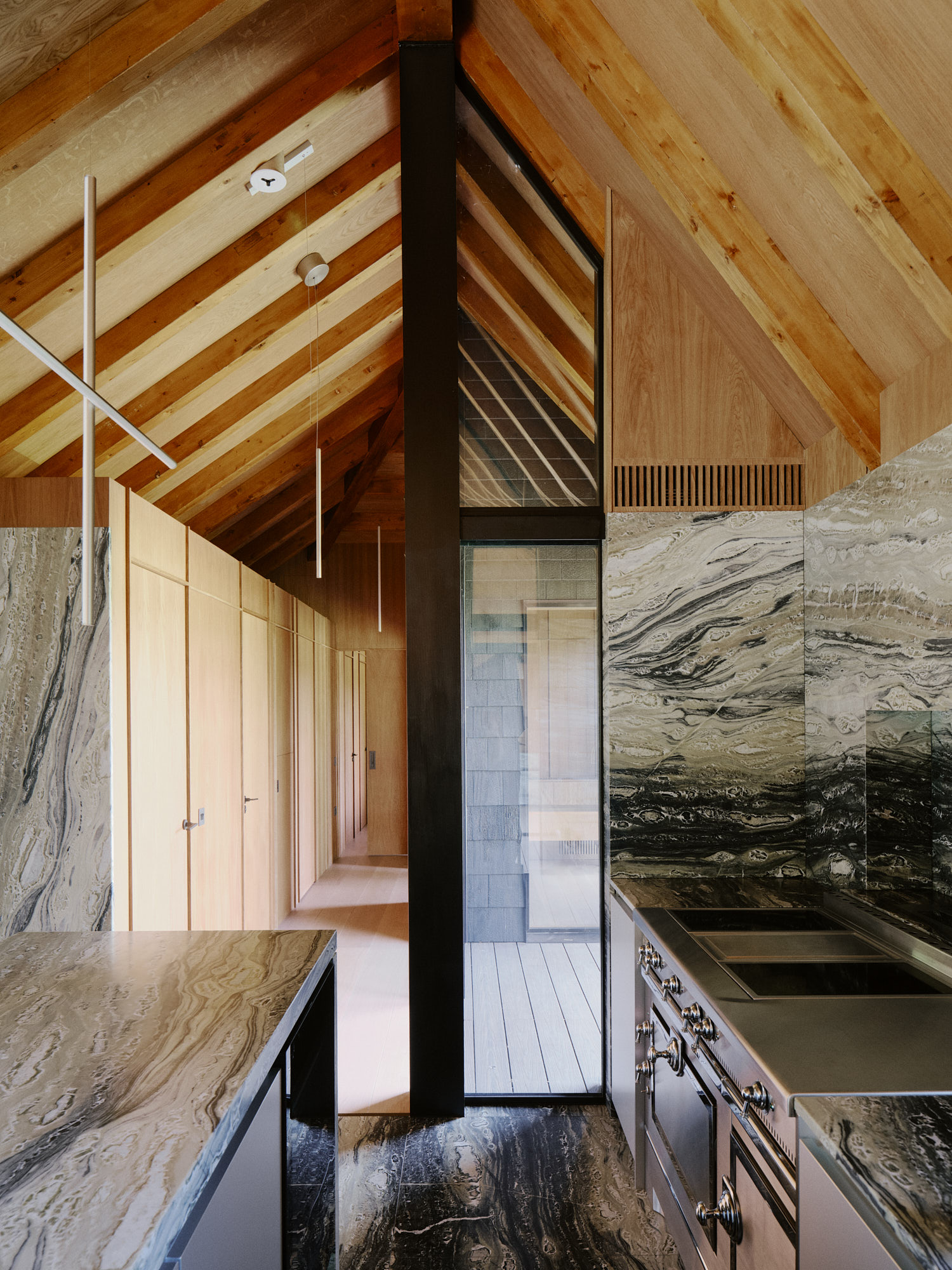
DROO worked on the design aesthetically, but importantly, also in terms of its functionality and resource planning (such as its on-site water management systems). Meanwhile, the concept has been infused with learnings from countryside living and polo playing, and the popular sport's needs and traditions.
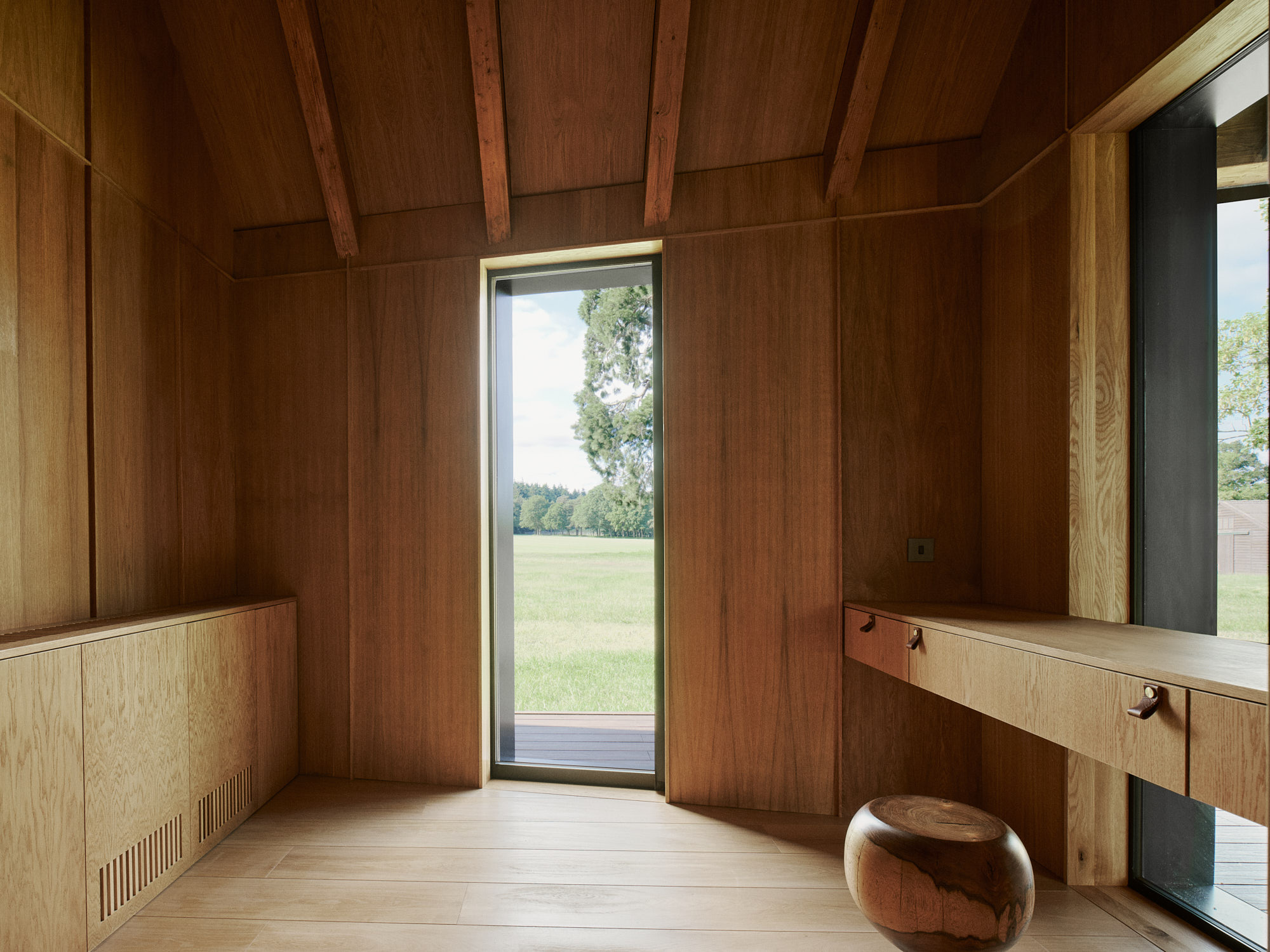
The private clubhouse is the only entirely new structure within the complex, and it will be used for patrons of the various visiting teams and guests. Looking out towards the polo field, combining indoor and outdoor areas and facilities, as well as opening up and connecting with its neighbouring areas, the spruce glulam frame building completes the masterplan's horseshoe formation and adds a focal point to the whole with its crisp lines and contemporary shapes.
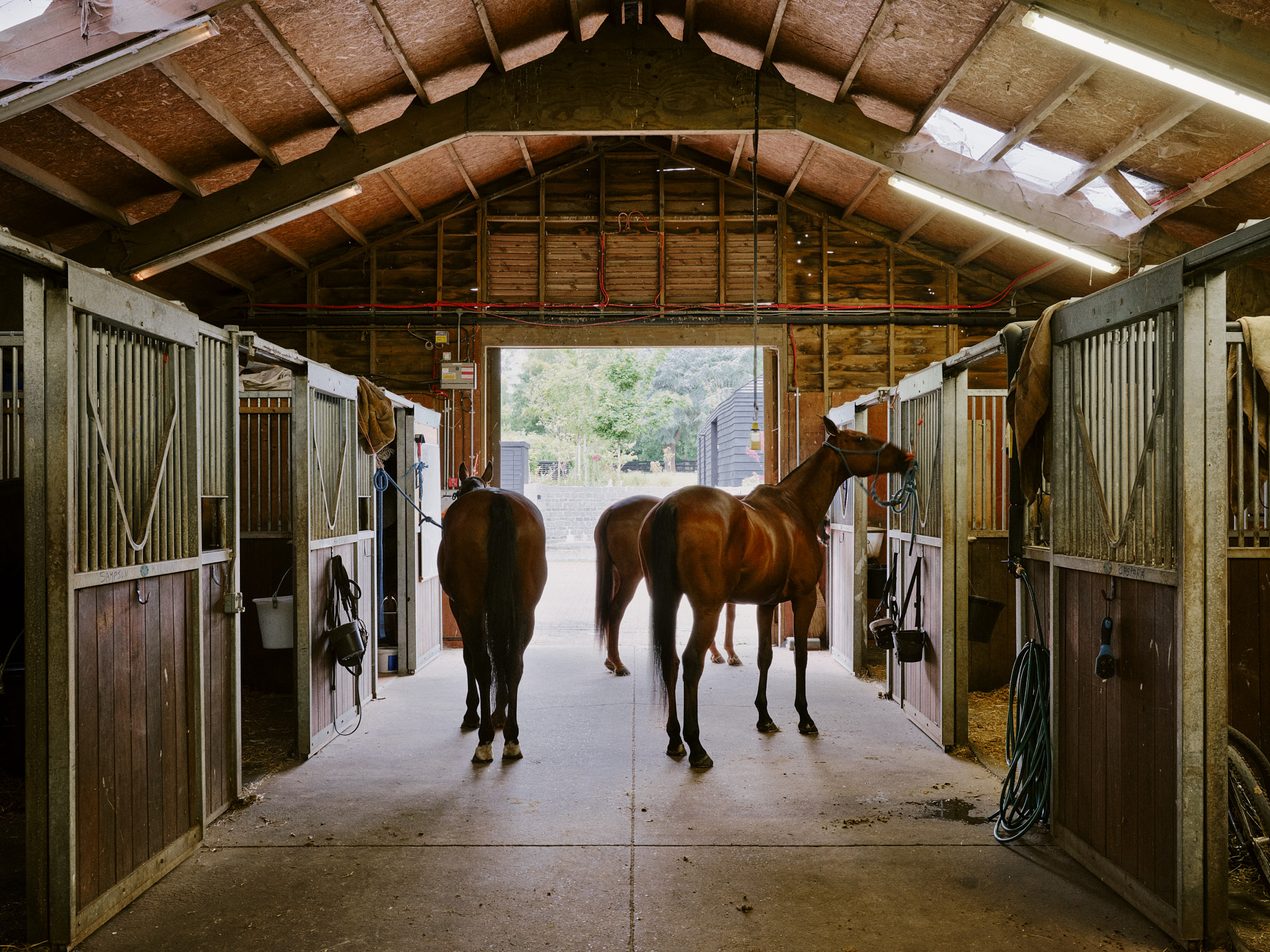
At the same time, DROO nods to the surrounding farm structures' vernacular with their addition's overall volume and pitched roof – as a result, the clubhouse feels entirely at home in its context. Its distinctive black colour is the result of its cladding in traditional shou sugi Japanese charred wood shingles (known for their long-wearing and fungicidal properties).
Receive our daily digest of inspiration, escapism and design stories from around the world direct to your inbox.
The building has hidden uses too. It funnels rainwater, collecting it to irrigate channels that lead to the nearby lake. This in turn is used to water the fields, in a cyclical process that preserves the precious resource while keeping the planted expanses green year-round.
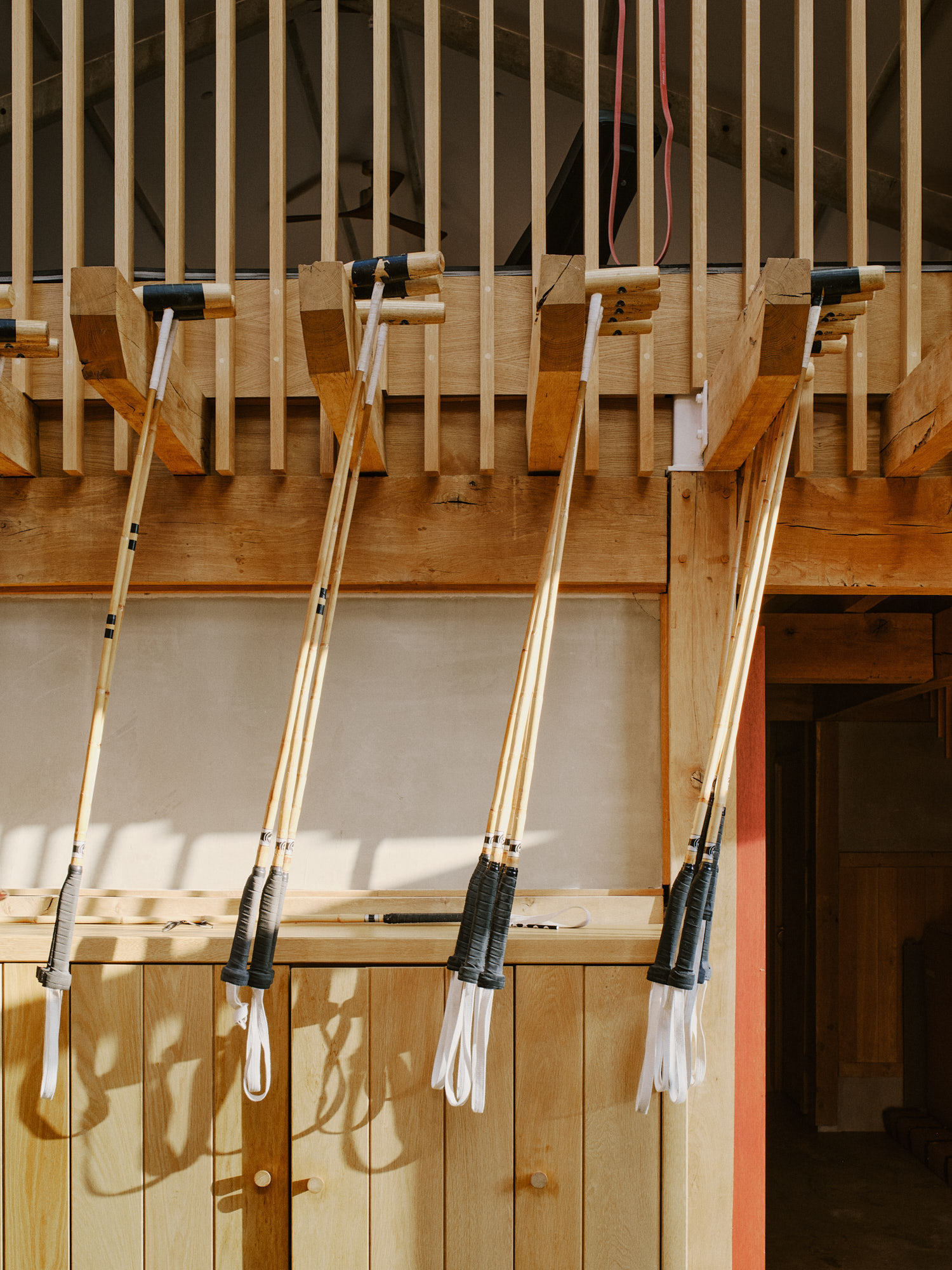
Elsewhere on site, clay paint on walls and timber balustrades and staircase details meet exposed ceiling beams in an honest, coherent, hardwearing and textured look.
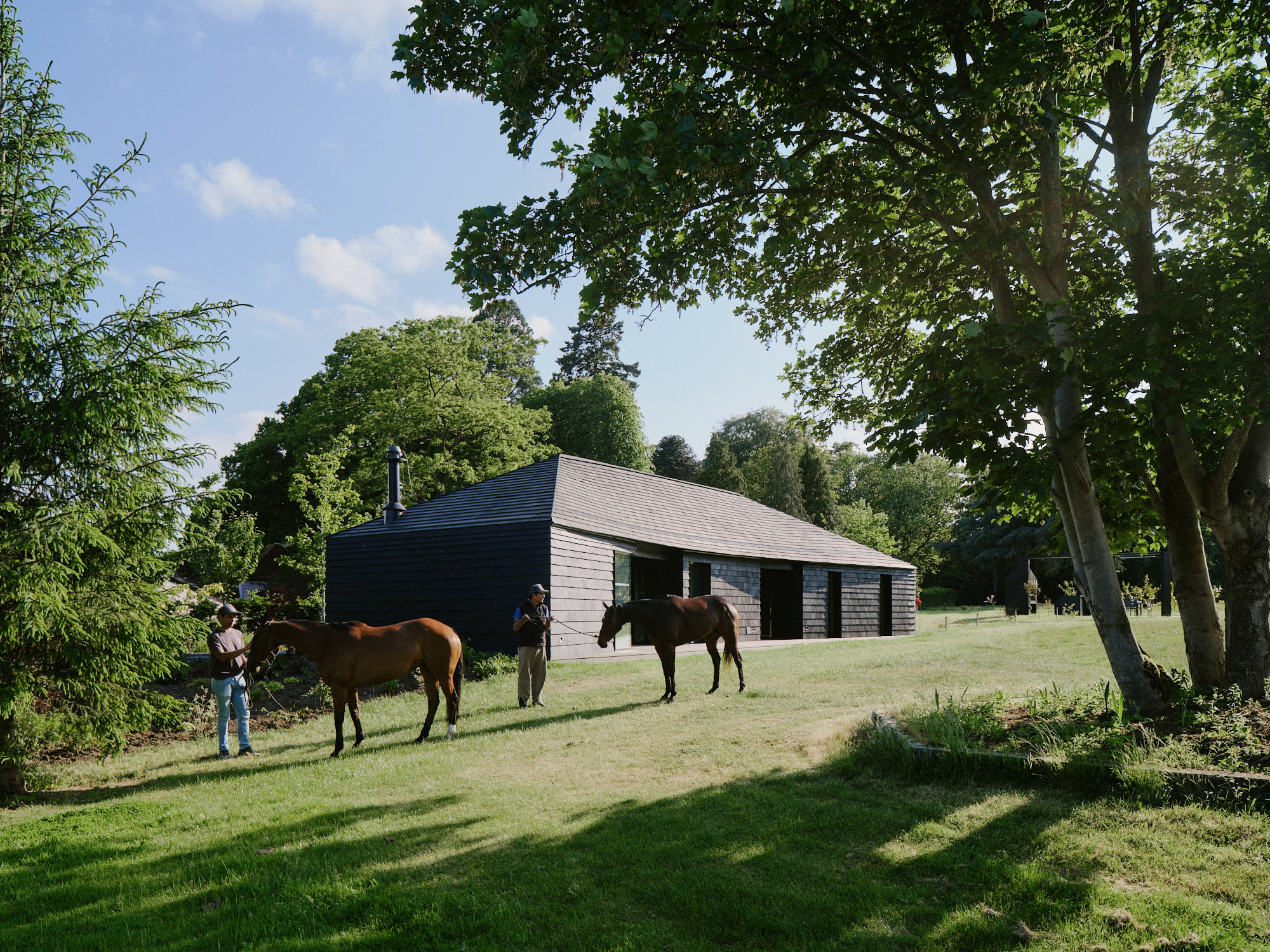
Ellie Stathaki is the Architecture & Environment Director at Wallpaper*. She trained as an architect at the Aristotle University of Thessaloniki in Greece and studied architectural history at the Bartlett in London. Now an established journalist, she has been a member of the Wallpaper* team since 2006, visiting buildings across the globe and interviewing leading architects such as Tadao Ando and Rem Koolhaas. Ellie has also taken part in judging panels, moderated events, curated shows and contributed in books, such as The Contemporary House (Thames & Hudson, 2018), Glenn Sestig Architecture Diary (2020) and House London (2022).
-
 Robert Therrien's largest-ever museum show in Los Angeles is enduringly appealing
Robert Therrien's largest-ever museum show in Los Angeles is enduringly appealing'This is a Story' at The Broad unites 120 of Robert Therrien's sculptures, paintings and works on paper
-
 The Wallpaper* style team recall their personal style moments of 2025
The Wallpaper* style team recall their personal style moments of 2025In a landmark year for fashion, the Wallpaper* style editors found joy in the new – from Matthieu Blazy’s Chanel debut to a clean slate at Jil Sander
-
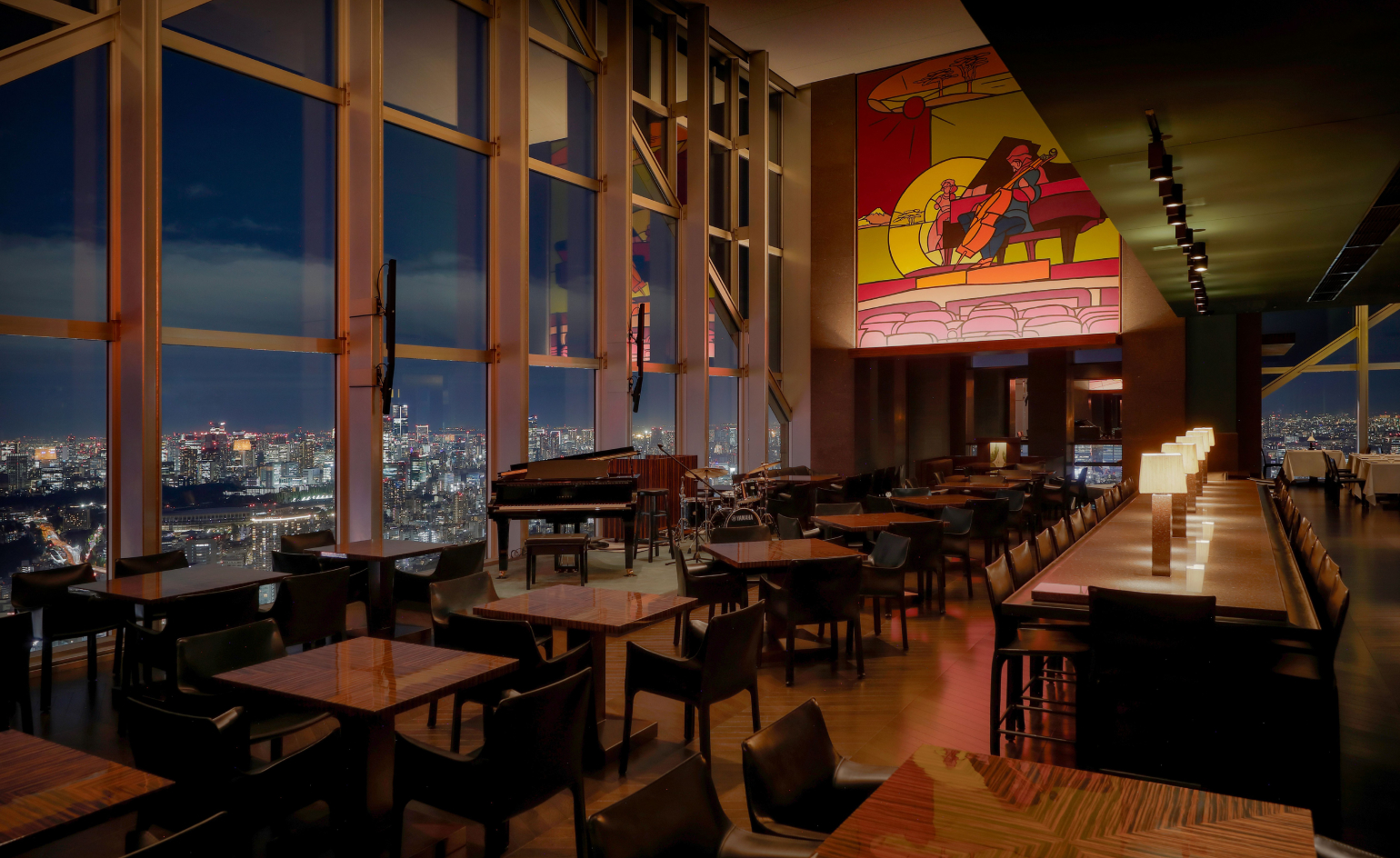 Tokyo’s most cinematic stay reopens as an exercise in architectural self-control
Tokyo’s most cinematic stay reopens as an exercise in architectural self-controlPark Hyatt Tokyo and Studio Jouin Manku demonstrate how design can evolve without erasing memory, balancing modernist heritage with contemporary comfort
-
 Arbour House is a north London home that lies low but punches high
Arbour House is a north London home that lies low but punches highArbour House by Andrei Saltykov is a low-lying Crouch End home with a striking roof structure that sets it apart
-
 A former agricultural building is transformed into a minimal rural home by Bindloss Dawes
A former agricultural building is transformed into a minimal rural home by Bindloss DawesZero-carbon design meets adaptive re-use in the Tractor Shed, a stripped-back house in a country village by Somerset architects Bindloss Dawes
-
 RIBA House of the Year 2025 is a ‘rare mixture of sensitivity and boldness’
RIBA House of the Year 2025 is a ‘rare mixture of sensitivity and boldness’Topping the list of seven shortlisted homes, Izat Arundell’s Hebridean self-build – named Caochan na Creige – is announced as the RIBA House of the Year 2025
-
 In addition to brutalist buildings, Alison Smithson designed some of the most creative Christmas cards we've seen
In addition to brutalist buildings, Alison Smithson designed some of the most creative Christmas cards we've seenThe architect’s collection of season’s greetings is on show at the Roca London Gallery, just in time for the holidays
-
 In South Wales, a remote coastal farmhouse flaunts its modern revamp, primed for hosting
In South Wales, a remote coastal farmhouse flaunts its modern revamp, primed for hostingA farmhouse perched on the Gower Peninsula, Delfyd Farm reveals its ground-floor refresh by architecture studio Rural Office, which created a cosy home with breathtaking views
-
 A revived public space in Aberdeen is named Scotland’s building of the year
A revived public space in Aberdeen is named Scotland’s building of the yearAberdeen's Union Terrace Gardens by Stallan-Brand Architecture + Design and LDA Design wins the 2025 Andrew Doolan Best Building in Scotland Award
-
 A refreshed 1950s apartment in East London allows for moments of discovery
A refreshed 1950s apartment in East London allows for moments of discoveryWith this 1950s apartment redesign, London-based architects Studio Naama wanted to create a residence which reflects the fun and individual nature of the clients
-
 In this Cotswolds home, drama meets minimalism
In this Cotswolds home, drama meets minimalismCotswolds home Hiaven house, with interiors designed by McLaren Excell, is a perfect blend of contemporary chic and calm, countryside drama